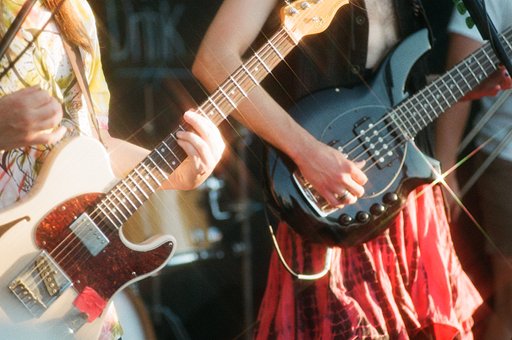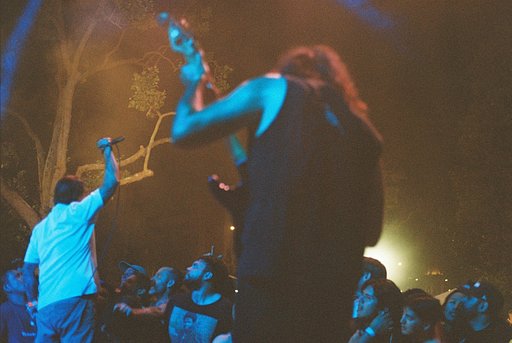Always Learning with Film Photography — An Interview With Paul Estévez
14 Share TweetWe were first introduced to the work of photographer Paul Estévez during the onset of the COVID-19 pandemic. We talked to him about different things that were keeping him busy (and sane) during self-isolation and that included his series of film photos of a miniature world. We've become his fans ever since.
Paul has since joined our community and he's come up with wonderful images that incorporate different aesthetics, techniques, and an ever-changing personal style. Some of his recent work has ventured into the world of fine art and conceptual photography which made us wonder what his next steps will be. Curious to know more about Paul and his work? Let's find out together in this interview.

Hi Paul and welcome back to the Magazine! How have you been since we last spoke?
Hello! Nice to be with you again. I have been very good. I spend my time working, reading, and creating photos.
What currently keeps you busy?
I recently took a fine photographic printing workshop with a Mexican teacher who has a vast knowledge of the subject. His name is Narciso Hernández and he has generously shared part of his knowledge with me with the intention of enhancing my photographs, specifically in photographic printing in the dark room.
What creative projects have you been working on?
From some of the processes learned with master Hernández, I have experimented with collages using the test strips and I try to perfect my technique in printing in a darkroom. On the other hand, I have been experimenting with the effects provided by electric shocks applied to photographic paper, 4x5 plates, and instant film.
As well as continuing my “J's Story” series which you very kindly did a report on.
We love the fine art/conceptual look of your recent work. How do you come up with ideas for your images?
Thank you very much! I always try to have a very open and observant mind to allow myself to be amazed by the things that surround me. In addition to the fact that, as part of my artistic discipline, I visit museums, I love cinema, and reading inspires me and triggers many ideas.
But a key aspect is that I allow myself to experiment and make mistakes. At the moment it is very frustrating, since one wastes material and time, however, in the end, all this brings benefits since it leads me to reflect on my work and on the images I am creating. I am learning to understand that frustration and error are a couple of severe but very generous teachers.
How would you describe your work and style?
It is tough for me to define my work and style, and for me, defining myself is akin to limiting myself. Mainly, I am looking for my work to not look like anything or anyone. I know that it is inevitable that one's work is permeated by the influences of other artists, however, I try to create photographs that no one else has done. That's my intention, but I'm not sure I'll always get it.
What inspires you to make art?
I don't know, I can't describe it. It's a kind of internal fire. Sometimes the frustration is so great that I want to throw everything (film, cameras, paper, negatives) in the trash and forget about it forever. But there is something that is present there—a flame that does not go out and when everything calms down—it grows and grows and makes me get up and seek to create art. I think it is something inevitable. That flame turns me into a fire.
Why choose film for your creative work?
Due to its great potential for experimentation, from the film itself (film soup, film swap, etc.), to the moment of shooting (filters, masks, etc.) to the various possibilities of expressing the result (cyanotype, palladium platinum, rayogram, etc.).
Also because it is something of a rebellion for these times in which we live – full of speed and instantaneity. Analogue photography flows contrary to that. It helps us develop patience, it is almost a meditative act and for me, it has a lot to do with Zen philosophy, which I like to study.
Analogue photography does not offer immediate results and waiting for the development of the latent image is a wonderful wait. It helps us develop humility, we know that many things can get out of control, for example, an expired film is a coin in the air and no matter how careful you are with the development chemicals, there are always surprises.
It has happened to me on many occasions that I have lost entire sessions due to some failure, and there is no other option but to take a deep breath and start again.
Digital photography is wonderful for its immediacy and practicality. But the enigma, processes, and results that analogue photography offers are worth taking all the risks.
What are your favorite camera and film combinations?
At the moment there are three:
1. Hasselblad 500CM + Earl Grey B&W 120 - I love the grey tonal range of Earl Grey B&W and I think the Hasselblad camera taps into a lot of the film's potential.
2. Mamiya RB67 Pro S + Portra 160 - I like the dynamic color range of the Portra.
3. Sprocket Rocket + Proimage - The Sprocket Rocket has allowed me to experiment with double exposures and panoramas that always leave me feeling like I'm still experimenting.
Any advice for people who are new to film photography?
See mistakes and frustration as teachers. And don't stop practicing, and practicing, and practicing. And when you get tired, practice again.
What does a perfect day look like for you?
Chatting with my friends from Lomography Online Magazine and then going to take photos. There is nothing better than that.
We would like to thank Paul for sharing his story with us. Follow him at his LomoHome to stay updated with his work.
written by cheeo on 2022-09-30 #people #interview #artist #analogue-photography #conceptual #fine-art #paul-estevez

































No Comments